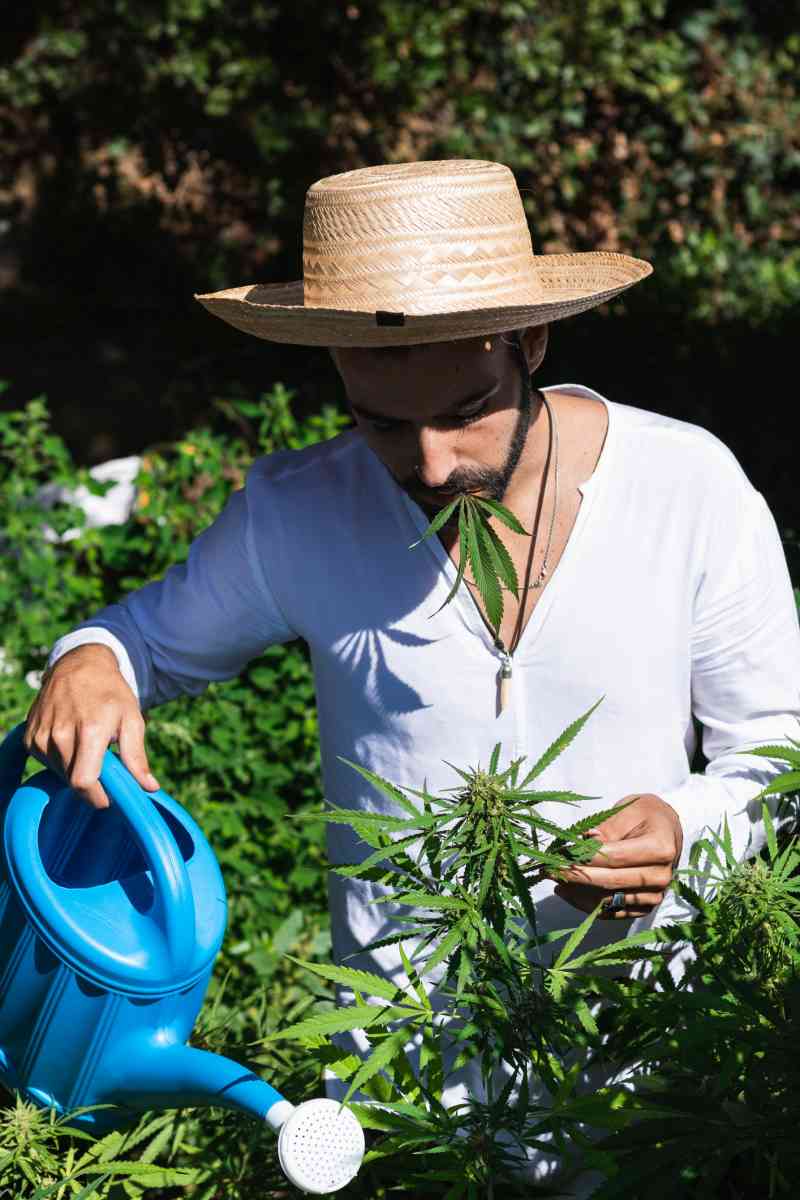Flushing cannabis is a highly regarded practice among growers. After using various nutrients in the different phases of the plant’s growth, the grow medium becomes concentrated with nutrient deposits.
The plant also stores the excess nutrients and other compounds in its leaves and buds.
Flushing removes the salts and nutrient deposits from the grow medium and forces the plant to use the nutrients in its reserves. This purifies the buds, giving them a better taste and smoothness when you smoke them.
Besides improving the taste and aroma of your buds, flushing makes for healthier buds, white ash, light smokes, and generally a better smoking experience.
But flushing doesn’t lack critics. Some people have opined that flushing denies the plant the nutrients it needs for the last round of the buds’ growth.
And while people hold their beliefs dearly, several tests have proved that flushing improves the quality of your buds and doesn’t affect the growth of the buds when done at the right time.
Do Buds Grow During Flushing?
Buds grow during flushing because the plant doesn’t lose all its nutrients. The goal of flushing is never to starve the plant but to force it to use the nutrients it stores in its reserves for the final phase of the bud’s growth.
When you flush the plants, you’re removing the excess salts in the grow medium, freeing the nutrient build-up in the roots. This creates the perfect growing environment and channels the plant’s energy from nutrient uptake to utilizing the stored nutrients for the last rush of the bud’s growth.
Let’s dig a little deeper. Most grow media particles are negatively charged. Organic soils are a classic example— the particles are negatively charged and thus attract and trap the positively charged nutrients like calcium, magnesium, and potassium.
Flushing wipes the salt buildup out of the grow medium, but the plant still draws the nutrients from its reserves in the old tissues and channel them to growing points.
Though the buds grow during flushing, the goal is never to fatten the buds but to improve their quality by removing all the nutrient residues.
For a healthy plant, the nutrients from the reserves are often enough to sustain the buds’ growth through the 7-14 days flushing duration.
Besides, when not flushed, the accumulation of nutrients in the grow medium inhibits nutrient and water uptake. Flushing the plant relieves the medium of the excess salts and improves aeration.
Flushing with the right agent also improves the pH profile of the grow medium and can improve nutrient uptake.
When growing in organic media, nutrients never leave entirely. The electric charges of the organic media have a strong affinity to nutrient particles, and small amounts always remain after flushing. The uptake of these small amounts of minerals further fuels the buds’ growth.
Do Buds Fatten Up During Flush?
During flushing, the buds might show rapid growth, fattening, and bulging out. The plants are in the final stages of development and thus channel their energy into nourishing the buds. Much of the bud fattening has a lot to do with the plant’s defenses fueling the last-minute rush than flushing.
Different theories explain why flushing, in itself, can fatten buds. Most of these theories revolve around timing and grow media. When you use organic soils, flushing only strips away the excess nutrients from the soil but leaves small amounts.
Since flushing alters the chemical environment, it improves pH balance, enhances uptake of the remaining nutrients, and boosts bud growth.
For non-charged grow media, like Rockwool, flushing takes all the nutrients away, forcing the plant to self-cannibalize to sustain the buds.
If you poorly time it or prolong the flushing duration, you might inhibit bud development since the plant will deplete its reserves too early to sustain the last rush of the buds’ growth.
Flushing duration is also an essential part of the puzzle. When you grow in coco coir, you will flush for a shorter time than when you grow in organic soil. In coco, only flush for one week to harvest since the medium doesn’t horde so much nutrients.
Most people assume flushing can only be effective when done for two weeks before harvesting. If you applied the same duration for plants grown in hydro systems, you’d starve the plant and inhibit the buds’ growth.
In hydro, flushing for one or two days is enough since RO water doesn’t leave any nutrients in the grow medium.
How Often To Water During Flush?
Flushing shouldn’t change the frequency of your watering. Even when you’re flushing, keep the watering schedule. The only change is that you don’t feed the plant various nutrients during the watering sessions.
When I flush, I flood the pot with 2 gallons of water above the size of the bucket. If you grow in 3-gallon pots, use 5 gallons of water to flush the plant. Observe the color of the run-off water.
The color should be more transparent as you continue to add the gallons of water. When we say you should flush for two weeks, we don’t mean you should water the plant every day.
Water the plant at regular schedules, but watch the pH of the flushing water and add no nutrient.
Can You Over Water When Flushing?
Overwatering can happen even during the flushing period. If you water the plant too frequently with more gallons of water in the hope of flushing it, you can inhibit aeration at the roots and affect the root’s health.
The mistake most people make is to flush more frequently than they normally water the plant. The nutrients will be leached, but you’ll be staring at overwatering at the late stages of the plant’s growth.
Flood the grow medium the first time and let the water run off. Water after the top soil has dried, you may flood it again the second time, but subsequent watering should just be the normal quantity. But make sure to pH the water.
Does PH Matter When Flushing?
pH matters gravely during flushing. When flushing, you’re trying to make it easy for the plant to use the nutrients in the grow medium and those in its reserves by flushing the salts and the extra nutes away. If the pH of the water you’re using for flushing is incorrect, you risk causing nutrient lockout.
Keeping the pH in the sweet zone is vital because any fluctuations can inhibit the uptake of minerals and affect the growth of your buds in the final stage and reduce your yield.
Do you pH your flush water? To be on the safer side, pH your flush water to enhance the outcome of the flush. When you pH the water, you remove excess nutrients without inhibiting the plant’s nutrient uptake from its reserves and the grow medium.
In summary, buds continue to grow during flushing, and many factors can contribute to burgeoning buds. Flushing balances the pH and improves uptake of minerals which spur buds’ growth. But the plant also channels its energies to bud production when the scare of nutrients washing away becomes real, thus causing the last-minute bud-fattening rush.

